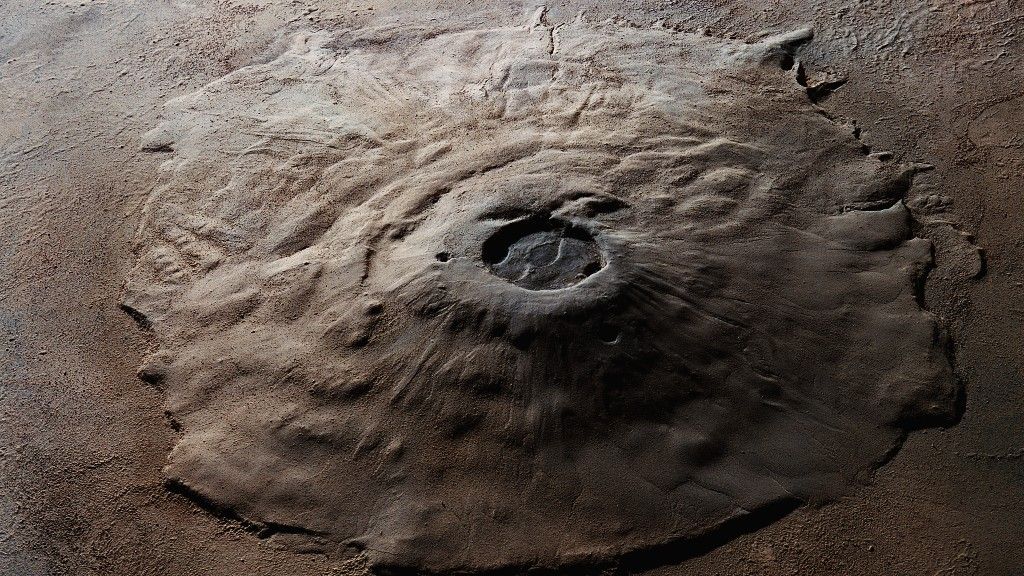Olympus Mons, located on the planet Mars, is not only the tallest mountain in our solar system, but it is also one of the most awe-inspiring natural features known to humanity. Standing at a towering height of 25 kilometers (about 16 miles), it dwarfs Earth’s highest peak, Mount Everest, which reaches a height of 8.8 kilometers (5.5 miles). The sheer size and scale of Olympus Mons make it a fascinating subject for both scientific study and human imagination.

Olympus Mons is classified as a shield volcano, which means it was formed by the eruption of low-viscosity lava that spread out in broad layers, creating a wide, gently sloping profile. This type of volcano is quite different from the steep slopes seen in other volcanic formations, such as Mount St. Helens or Mount Fuji. Due to the lower gravity on Mars, the mountain can grow much taller than any on Earth, as the lack of significant atmospheric pressure allows volcanic structures to rise to such extreme heights.

In addition to its impressive height, Olympus Mons is also vast in terms of its horizontal span. The base of the volcano is approximately 600 kilometers (about 370 miles) in diameter, roughly the size of the state of New Mexico in the United States. Surrounding the peak is a massive cliff, called the caldera, which reaches heights of up to 6 kilometers (3.7 miles) and was formed by the collapse of the volcano’s summit after a series of eruptions.

One of the reasons Olympus Mons is so massive is due to the conditions on Mars, including its lower gravity (about one-third of Earth’s gravity), which allows for the growth of larger geological structures. Additionally, Mars lacks plate tectonics, meaning there is no shifting of plates that could disrupt the growth of a volcano over time, allowing Olympus Mons to continue building up for billions of years.
Despite its impressive size, Olympus Mons remains dormant, with no signs of active eruptions for millions of years. However, scientists continue to study the volcano, seeking to understand more about the geological history of Mars and the potential for future volcanic activity on the planet.
In conclusion, Olympus Mons stands as a testament to the incredible power of volcanic activity and the unique conditions of Mars. Its towering height and vast size remind us of the wonders that exist beyond Earth and inspire curiosity about the mysteries of our solar system.